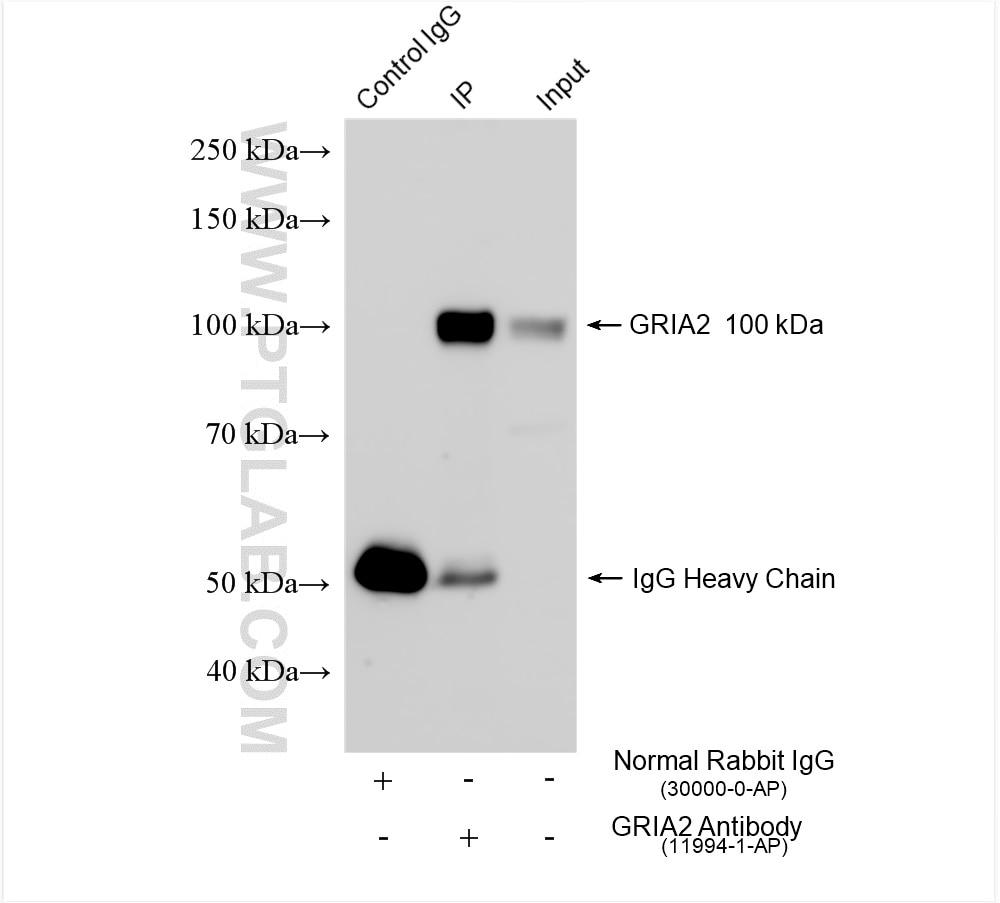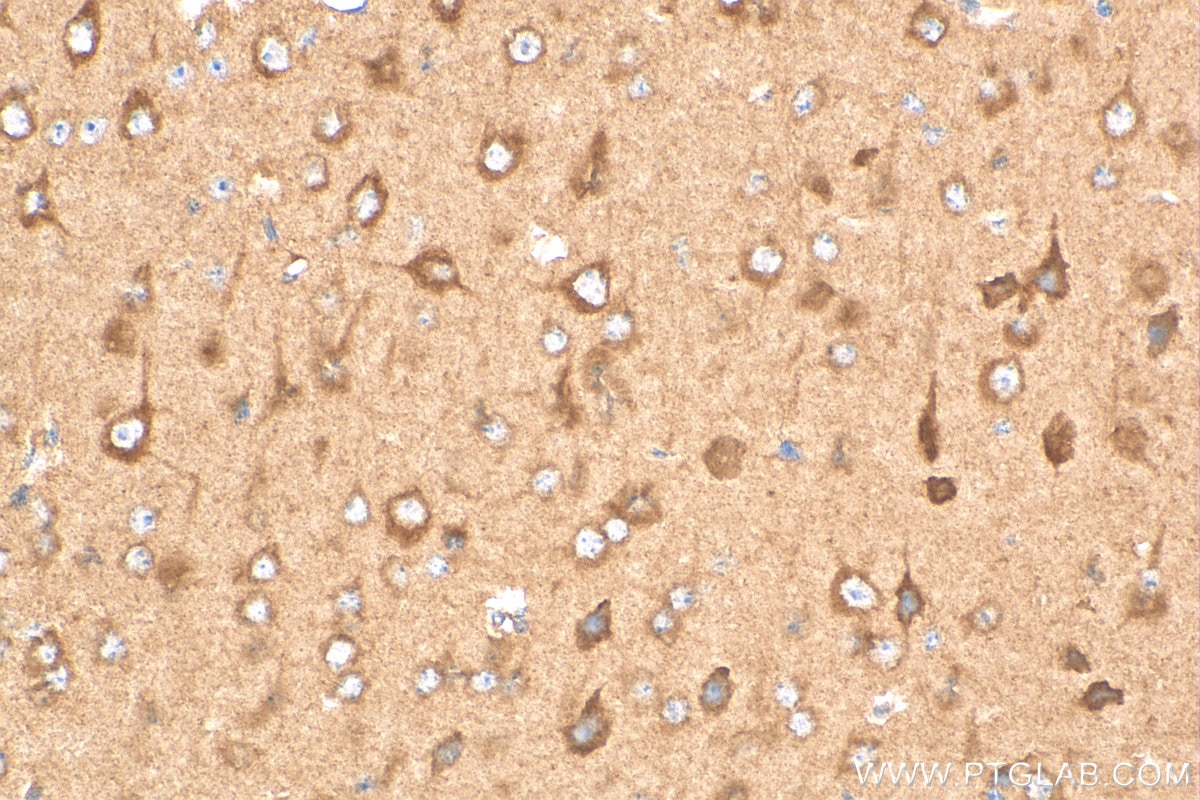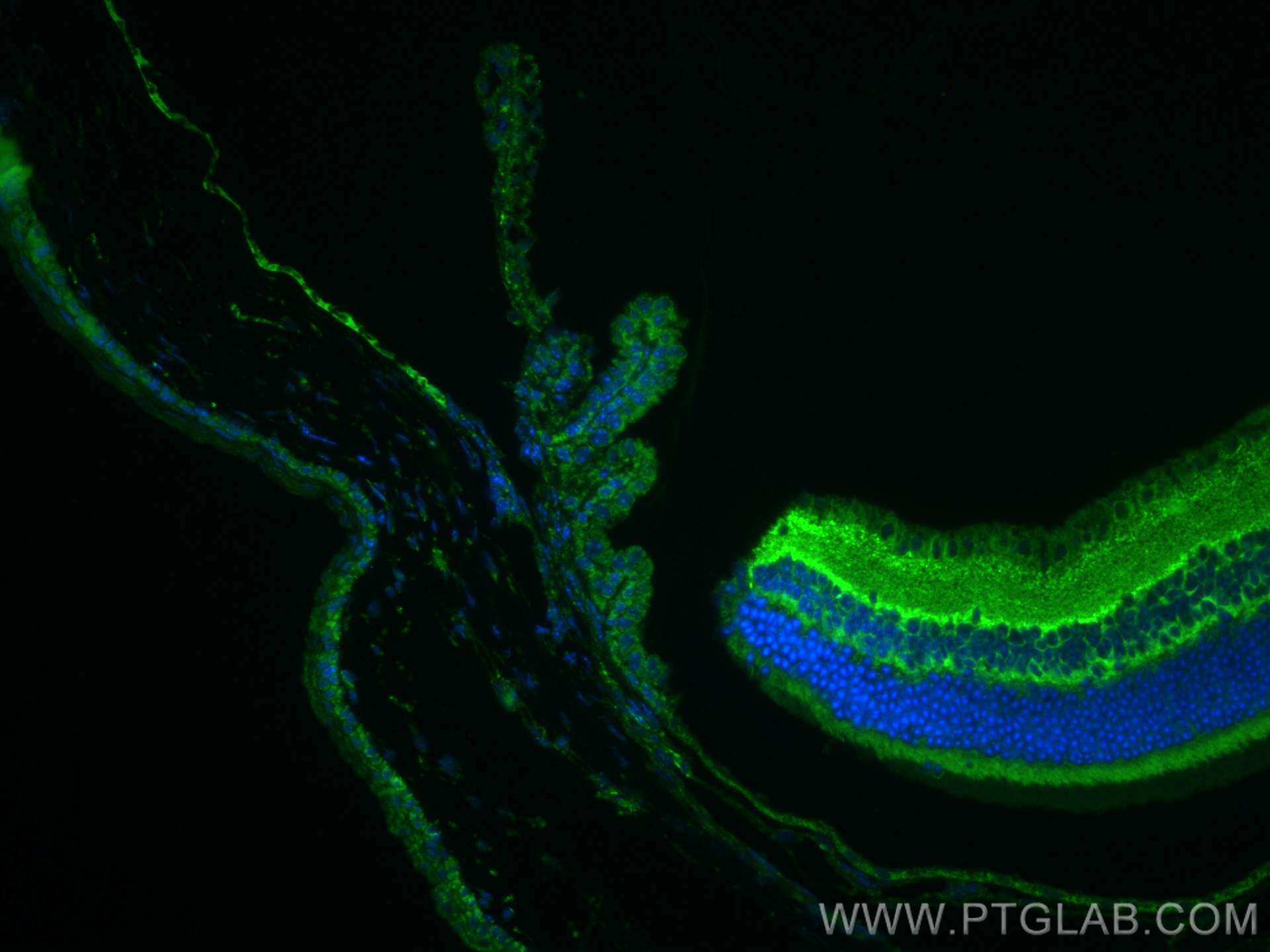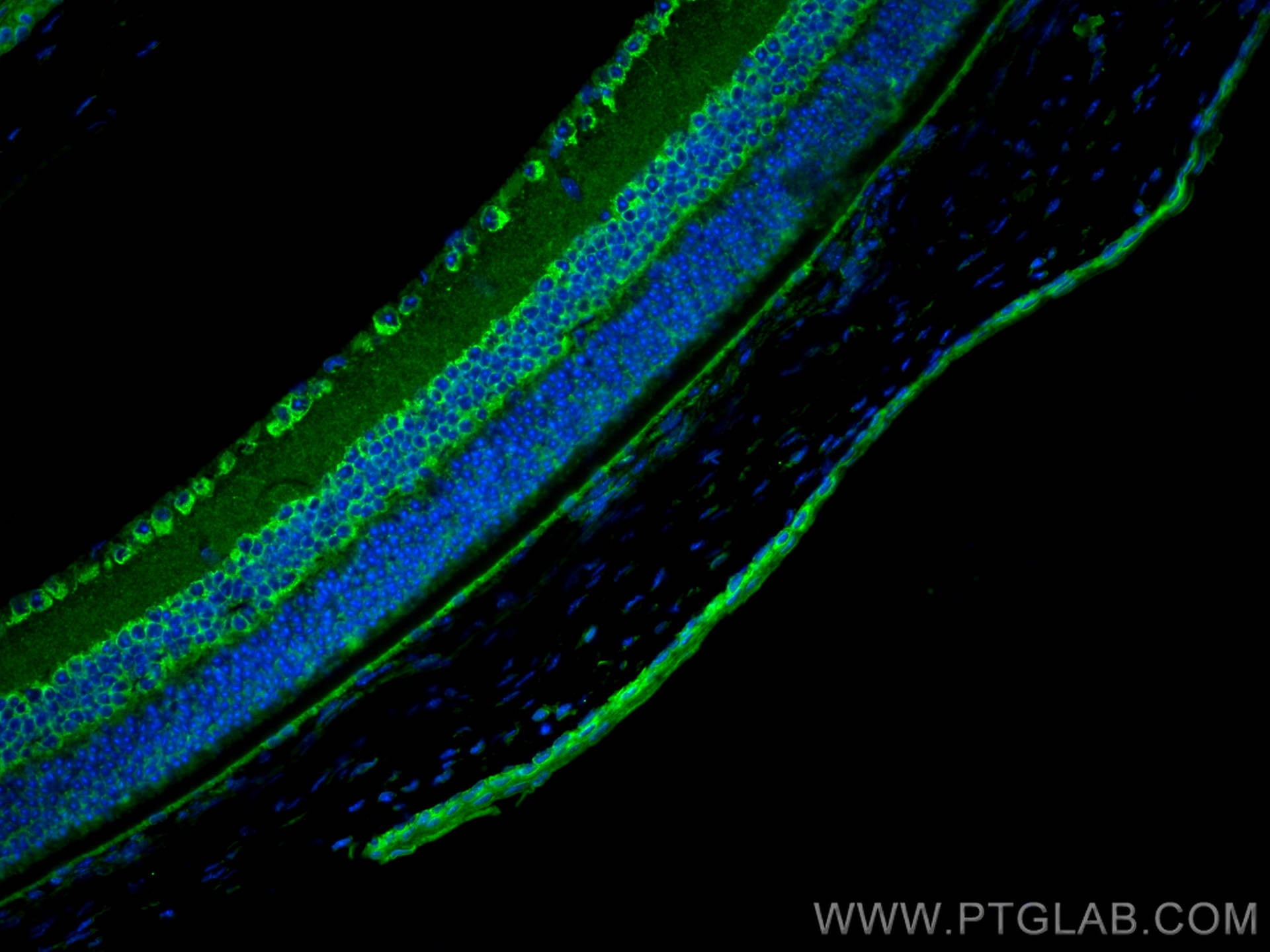Tested Applications
| Positive WB detected in | mouse brain tissue, rat brain tissue |
| Positive IP detected in | mouse brain tissue |
| Positive IHC detected in | mouse brain tissue Note: suggested antigen retrieval with TE buffer pH 9.0; (*) Alternatively, antigen retrieval may be performed with citrate buffer pH 6.0 |
| Positive IF-P detected in | mouse eye tissue |
Recommended dilution
| Application | Dilution |
|---|---|
| Western Blot (WB) | WB : 1:5000-1:50000 |
| Immunoprecipitation (IP) | IP : 0.5-4.0 ug for 1.0-3.0 mg of total protein lysate |
| Immunohistochemistry (IHC) | IHC : 1:50-1:500 |
| Immunofluorescence (IF)-P | IF-P : 1:50-1:500 |
| It is recommended that this reagent should be titrated in each testing system to obtain optimal results. | |
| Sample-dependent, Check data in validation data gallery. | |
Published Applications
| WB | See 43 publications below |
| IHC | See 3 publications below |
| IF | See 5 publications below |
| IP | See 1 publications below |
| CoIP | See 1 publications below |
Product Information
11994-1-AP targets Glutamate receptor 2 in WB, IHC, IF-P, IP, CoIP, ELISA applications and shows reactivity with human, mouse, rat samples.
| Tested Reactivity | human, mouse, rat |
| Cited Reactivity | human, mouse, rat |
| Host / Isotype | Rabbit / IgG |
| Class | Polyclonal |
| Type | Antibody |
| Immunogen |
CatNo: Ag2662 Product name: Recombinant human GRIA2 protein Source: e coli.-derived, PGEX-4T Tag: GST Domain: 36-356 aa of BC010574 Sequence: GADQEYSAFRVGMVQFSTSEFRLTPHIDNLEVANSFAVTNAFCSQFSRGVYAIFGFYDKKSVNTITSFCGTLHVSFITPSFPTDGTHPFVIQMRPDLKGALLSLVEYYQWDKFAYLYDSDRGLSTLQAVLDSAAEKKWQVTAINVGNINNDKKDEMYRSLFQDLELKKERRVILDCERDKVNDIVDQVITIGKHVKGYHYIIANLGFTDGDLLKIQFGGANVSGFQIVDYDDSLVSKFIERWSTLEEKEYPGAHTTTIKYTSALTYDAVQVMTEAFRNLRKQRIEISRRGNAGDCLANPAVPWGQGVEIERALKQVQVEGL Predict reactive species |
| Full Name | glutamate receptor, ionotropic, AMPA 2 |
| Calculated Molecular Weight | 883 aa, 99 kDa |
| Observed Molecular Weight | 94-105 kDa |
| GenBank Accession Number | BC010574 |
| Gene Symbol | GRIA2 |
| Gene ID (NCBI) | 2891 |
| RRID | AB_2113725 |
| Conjugate | Unconjugated |
| Form | Liquid |
| Purification Method | Antigen affinity purification |
| UNIPROT ID | P42262 |
| Storage Buffer | PBS with 0.02% sodium azide and 50% glycerol, pH 7.3. |
| Storage Conditions | Store at -20°C. Stable for one year after shipment. Aliquoting is unnecessary for -20oC storage. 20ul sizes contain 0.1% BSA. |
Background Information
Glutamate receptors are the predominant excitatory neurotransmitter receptors in the mammalian brain and are activated in a variety of normal neurophysiologic processes. GRIA2 (glutamate receptor 2, GluR-2) belongs to a family of glutamate receptors that are sensitive to alpha-amino-3-hydroxy-5-methyl-4-isoxazole propionate (AMPA), and function as ligand-activated cation channels that mediate the fast component of excitatory postsynaptic currents in neurons of the central nervous system. These channels are assembled from 4 related subunits, GRIA1-4. The presence of GRIA2 in the heteromeric AMPA receptors impermeabilizes it to calcium, preventing possible calcium-mediated toxicity.
Protocols
| Product Specific Protocols | |
|---|---|
| IF protocol for Glutamate receptor 2 antibody 11994-1-AP | Download protocol |
| IHC protocol for Glutamate receptor 2 antibody 11994-1-AP | Download protocol |
| IP protocol for Glutamate receptor 2 antibody 11994-1-AP | Download protocol |
| WB protocol for Glutamate receptor 2 antibody 11994-1-AP | Download protocol |
| Standard Protocols | |
|---|---|
| Click here to view our Standard Protocols |
Publications
| Species | Application | Title |
|---|---|---|
Nat Biotechnol Magnify is a universal molecular anchoring strategy for expansion microscopy | ||
J Allergy Clin Immunol Six-transmembrane epithelial antigens of the prostate comprise a novel inflammatory nexus in patients with pustular skin disorders. | ||
Sci Adv RNF220 is an E3 ubiquitin ligase for AMPA receptors to regulate synaptic transmission | ||
Mol Psychiatry A recurrent SHANK1 mutation implicated in autism spectrum disorder causes autistic-like core behaviors in mice via downregulation of mGluR1-IP3R1-calcium signaling. | ||
J Clin Invest TMEM25 modulates neuronal excitability and NMDA receptor subunit NR2B degradation. |
Reviews
The reviews below have been submitted by verified Proteintech customers who received an incentive for providing their feedback.
FH Lisa (Verified Customer) (10-04-2021) | The antibody signal is quite strong (50-70sec of exposure) and gives "clean" bands. The diluted antibody (TBS 0.1% Tween+5% BSA) does not work well anymore after 2-3 times of re-use
|












